Additional notes (click to expand)
Commemorative
Artemisia: after the Greek goddess Artemis who so benefitted from a plant of this family that she gave it her own name. This was also the old Latin name given to the mugwort or wormwoods. An alternative possibility for the derivation of this name is that it comes from Queen Artemisia of Halicarnassus in Asia Minor (Turkey), sister and wife of King Mausolus, who ruled after his death from 352 to 350 B.C.E. and built during her short reign one of the Seven Wonders of the Ancient World, the Mausoleum at Halicarnassus, which she unfortunately did not live to see the completion of. This is one of the many genera which Swedish botanist Carl Linnaeus published in his Species Plantarum in 1753 and is in the family Asteraceae.
http://www.calflora.net/southafrica/1A-B.html
Medicinal
Prescription only medicine: Artemesinin etc.
Causes redox homeostasis disruption. Contains artemisinin, the source of artemether and other powerful anti-malarials. They also treat bilharzia and other trematode and protozoal infections. Dihydroartimisinin targets metastatic melanoma cells.
There is a video by Dr Henry Oakeley
Videos from the garden
link
Artemisia annua (annual mugwort) is a species that has long
been used in traditional Asian medicine, mainly Chinese and
Hindu. The species is widespread and known as a medicinal
plant not only in Asia but also in Europe, in both Americas,
and Australia. The species has become a subject of particular
interest due to the 2015 Nobel Prize awarded for detecting
the sesquiterpene lactone artemisinin in it and proving its
antimalarial activities. The raw materials obtained from this
species are Artemisiae annuae folium and Artemisiae annuae
herba. The leaves are a raw material in the Chinese Pharmacopoeia and Vietnamese Pharmacopoeia. Both raw materials are
in the International Pharmacopoeia published by the WHO.
The main components of these raw materials are mainly specific sesquiterpene lactones, essential oil, flavonoids, coumarins, and phenolic acids. In traditional Asian medicine, the
species is used, for example, in the treatment of jaundice and
bacterial dysentery, as an antipyretic agent in malaria and tuberculosis, in the treatment of wounds and haemorrhoids,
and in viral, bacterial, and autoimmune diseases. Professional
pharmacological studies conducted today have confirmed its
known traditional applications and explain previously unknown mechanisms of its biological action and have also
found evidence of new directions of biological activity, including, among others, anti-inflammatory, analgesic, antioxidant,
antitumour, and nephroprotective activities. The species is of
growing importance in the cosmetics industry
Artemisia annua - Importance in Traditional Medicine and Current State of Knowledge on the Chemistry, Biological Activity and Possible Applications https://pubmed.ncbi.nlm.nih.gov/33482666/
The composition and many claimed medicinal uses in man and animals are reviewed in Ekiert et al (2021). The essential oil and a plant extract have recently been used in cosmetics as treatments for scurf, dermatitis, benign pigmented skin lesions and other superficial skin tumours and melanomas. Skin allergies are the principal toxic action; the pollen may cause respiratory sensitization.
Ekiert et al 2022. Artemisia annua – Importance in Traditional Medicine and Current State of Knowledge on the Chemistry, Biological Activity and Possible Applications. Planta Med 2021; 87: 584–599.
Jamie Durrani tells the story of how a wonder drug against malaria was discovered from a plant in a secret Chinese military project.
During the Vietnam war, soldiers on both sides were sent into mosquito-infested rainforest without proper protection against the disease the insects carried. By the late 1960s, the plasmodium falciparum parasites carried by mosquitos had begun developing resistance to chloroquine, a key anti-malarial that had been used extensively over the previous two decades. The result was tens of thousands of troops falling ill, and at times more soldiers were felled by malaria than actual combat.
While the US invested millions establishing a state-of-the-art malaria research unit, the North Vietnamese leader Ho Chi Minh turned to his allies in China for help. His plea triggered an extraordinary project that led to the discovery (or re-discovery) of the world's most effective malaria treatment. Remarkably, the project took place in the throes of China's cultural revolution, when many scientists and other intellectuals faced persecution, and much academic research had ground to a halt across the country.
Top secret
Having been informed of Ho's call for assistance, Chinese leader Mao Zedong ordered a nationwide search for new malaria treatments. The top-secret project would be led by the military and would involve hundreds of researchers from institutions across China.
On 23 May 1967, representatives of China's national science commission and the military assembled at a Beijing restaurant to start the operation, which was given the name Project 523 in reference to the project's launch date. The main aim was to find fast-acting drugs that could kill drug-resistant malaria parasites with minimal side effects.
Project 523 would last for 13 years and lead to the identification of numerous compounds with antimalarial activity, as well as related products like insecticides and spray devices. The most important of these was artemisinin, a drug that is today recommended by the World Health Organisation as the first-line treatment for malaria worldwide.
50 years of artemisinin Jamie Durrant 20 September 2022 https://www.chemistryworld.com/features/50-years-of-artemisinin/4016074.article?utm_campaign=cw_shared&utm_medium=email&utm_source=website
Nomenclature
qing hao su
Geographical distribution
- Asia-Temperate, Caucasus, North Caucasus
- Asia-Temperate, Caucasus, Transcaucasus
- Asia-Temperate, Middle Asia, Kazakhstan
- Asia-Temperate, Middle Asia, Kyrgyzstan
- Asia-Temperate, Middle Asia, Tadzhikistan
- Asia-Temperate, Middle Asia, Turkmenistan
- Asia-Temperate, Western Asia, Afghanistan
- Asia-Temperate, Western Asia, Iran
- Asia-Temperate, Western Asia, Lebanon-Syria
- Asia-Temperate, Western Asia, Turkey
- Europe, Eastern Europe, East European Russia
- Europe, Eastern Europe, Northwest European Russia
- Europe, Eastern Europe, Ukraine
- Europe, Southeastern Europe, Albania
- Europe, Southeastern Europe, Bosnia and Herzegovina
- Europe, Southeastern Europe, Bulgaria
- Europe, Southeastern Europe, Romania
- Europe, Southeastern Europe, Yugoslavia
Podcast
Artemisia annua L.
Family: ASTERACEAEGenus: Artemisia
Species: annua L.
Common names: Sweet Wormwood; Qing Hao
Distribution summary: Eastern Europe to Central Asia
Habit: Annual
Hardiness: H5 - Hardy; cold winter
Habitat: Rocky slopes, scrub & light woodland
Garden status: Currently grown
Garden location: Display bed (R), Olive tree bed (O)
Flowering months: July, August, September
Reason for growing: Medicinal, prescription only medicine
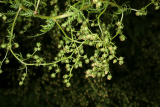
.JPG)
.JPG)
.JPG)

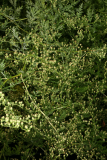
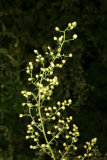
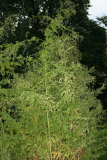
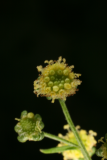
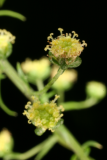
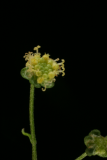


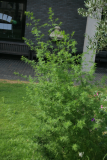
.JPG)
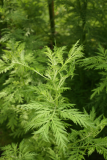
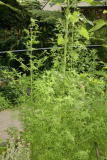
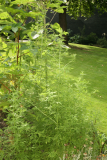
.JPG)
.JPG)
.JPG)